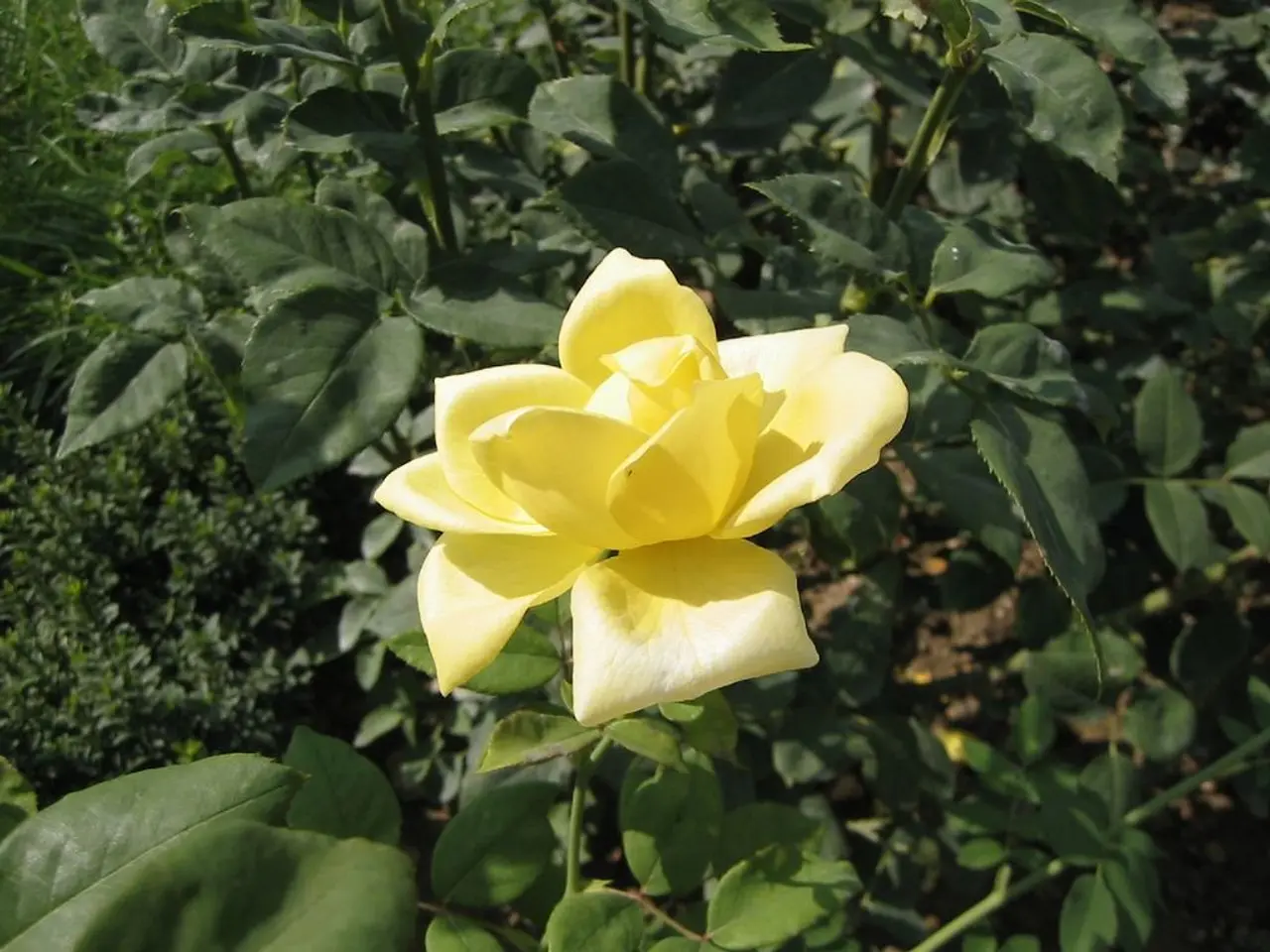Yellowing Orchid Leaves: Regular Causes and Solutions Explored
Orchids and Yellowing Leaves: A Guide to Understanding and Resolving the Issue
Orchids are known for their striking beauty, but sometimes they may exhibit yellow leaves, a sign that something is amiss. This article aims to help identify the causes of yellowing leaves in orchids and provide suggestions for remedying the issue.
Yellowing leaves in orchids often reflect plant stress due to disruptions in the plant's normal physiological functions. Common causes include environmental stress, improper watering, poor lighting conditions, nutrient deficiencies, and stress from repotting or shipping.
Water Issues can lead to yellow leaves. Overwatering can cause root rot, limiting water and nutrient uptake, leading to yellow leaves. Conversely, underwatering causes dehydration, and the plant shows yellowing as it cannot sustain photosynthesis properly.
Repotting Stress can also cause yellowing leaves. Disturbance of roots during repotting stresses the plant, leading to yellowing leaves as it struggles to recover. Recovery typically takes 2-4 weeks, with symptoms like soft or yellow old leaves commonly seen immediately after repotting.
Environmental Stress such as low humidity (less than 50%) or poor drainage causes leaf tip browning and yellowing due to moisture stress.
Light Conditions play a crucial role in orchid health. Too much direct sunlight can cause sunburn, producing yellow or brown patches on leaves, often crispy or necrotic. Too little light also stresses the orchid, resulting in yellow leaves.
Nutrient Deficiencies can cause chlorosis (yellowing) of leaves. Deficiency signs vary but can be aggravated by poor soil or fertilization routines.
To mitigate yellowing, ensure:
- Proper watering frequency (water when medium dries, avoid waterlogging)
- Good drainage with suitable potting mix (bark and perlite)
- Maintain humidity around 50-70%
- Provide bright, indirect light avoiding direct sunburn risk
- Limit fertilization immediately after major stress events like repotting
- Allow time for acclimation during environment changes
In summary, yellowing leaves are a warning that the orchid is under stress from one or more cultural factors, and addressing watering, light, humidity, and handling carefully usually resolves the issue.
It's essential to note that mature, lower orchid leaves turning yellow is a normal part of the plant's growth cycle and shedding process. A plant that is not getting enough light exposure usually has dark green leaves.
Pests can also cause yellowing orchid leaves. Common culprits include aphids, mealybugs, scale, spider mites, thrips, and whiteflies. Pests can usually be cleaned off with damp paper towels and a solution of water, neem oil, and washing-up liquid.
Orchids require different light requirements depending on the species, and most species do not like to be positioned in direct sunlight. Warm-growing orchids, such as Phalaenopsis and Vanda, require daytime temperatures of 70 to 85°F (21 to 29°C), with a nighttime minimum of 60°F (15°C). Cool-growing orchids, including Cymbidium and Dendrobium, thrive in daytime temperatures of 60 to 70°F (15 to 21°C) and nighttime temperatures of at least 50°F (10°C). Intermediate-growing orchids, such as Cattleya, Oncidium, and Paphiopedilum, need daytime temperatures of 65 to 75°F (18 to 24°C) and nighttime temperatures of at least 55°F (12°C).
Remember, it is not necessary to remove yellow orchid leaves unless for aesthetic reasons, in which case they can be gently pulled off or cut off at the base with sterile scissors. However, if affected tissue is observed, remove it with a sharp, sterile knife or hand pruners.
Orchids that are positioned in a cold, drafty room may experience yellow leaves due to low temperatures. Cease fertilizing when the flowers drop, and wait until new leaves begin to grow before starting again. Fertilizing is important during the active growth stage, using a balanced water-soluble orchid fertilizer.
In conclusion, understanding the causes of yellowing leaves in orchids and addressing the underlying issues can help maintain the health and beauty of these captivating plants.
In the process of maintaining an optimal home-and-garden lifestyle, it's crucial to address yellowing leaves in orchids, as they often signify plant stress caused by various factors such as environmental stress, improper watering, poor lighting conditions, nutrient deficiencies, and stress from repotting or shipping. Adjust watering frequency, potting mix, humidity levels, and light exposure to better support their growth and help prevent yellowing leaves.
On the other hand, if an orchid is thriving in appropriate conditions and yet exhibiting yellow leaves, it may be beneficial to investigate potential pests causing the issue, such as aphids, mealybugs, scale, spider mites, thrips, and whiteflies, which can often be eradicated through cleaning with damp paper towels and a solution of water, neem oil, and washing-up liquid.




